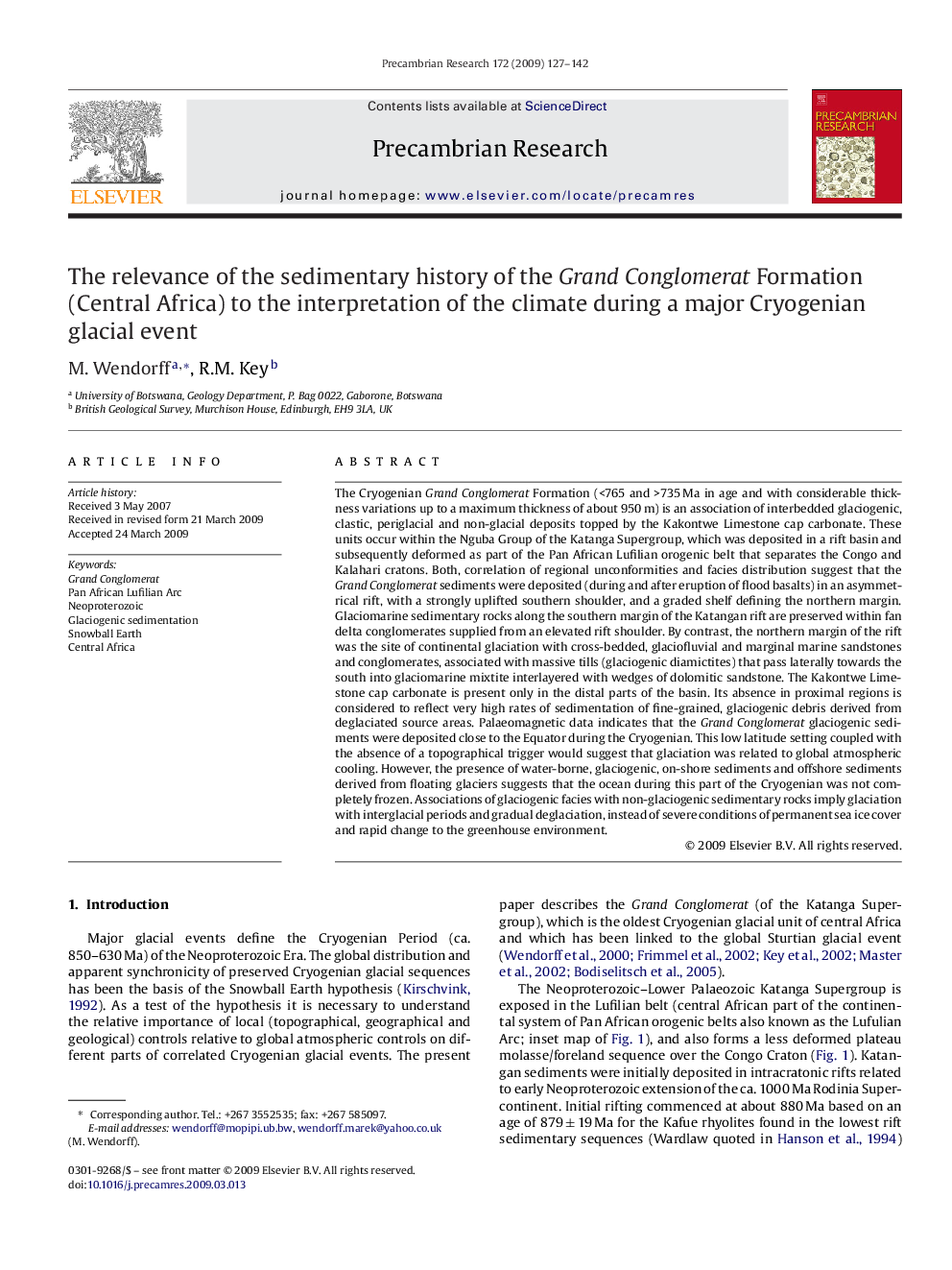| کد مقاله | کد نشریه | سال انتشار | مقاله انگلیسی | نسخه تمام متن |
|---|---|---|---|---|
| 4724224 | 1639689 | 2009 | 16 صفحه PDF | دانلود رایگان |

The Cryogenian Grand Conglomerat Formation (<765 and >735 Ma in age and with considerable thickness variations up to a maximum thickness of about 950 m) is an association of interbedded glaciogenic, clastic, periglacial and non-glacial deposits topped by the Kakontwe Limestone cap carbonate. These units occur within the Nguba Group of the Katanga Supergroup, which was deposited in a rift basin and subsequently deformed as part of the Pan African Lufilian orogenic belt that separates the Congo and Kalahari cratons. Both, correlation of regional unconformities and facies distribution suggest that the Grand Conglomerat sediments were deposited (during and after eruption of flood basalts) in an asymmetrical rift, with a strongly uplifted southern shoulder, and a graded shelf defining the northern margin. Glaciomarine sedimentary rocks along the southern margin of the Katangan rift are preserved within fan delta conglomerates supplied from an elevated rift shoulder. By contrast, the northern margin of the rift was the site of continental glaciation with cross-bedded, glaciofluvial and marginal marine sandstones and conglomerates, associated with massive tills (glaciogenic diamictites) that pass laterally towards the south into glaciomarine mixtite interlayered with wedges of dolomitic sandstone. The Kakontwe Limestone cap carbonate is present only in the distal parts of the basin. Its absence in proximal regions is considered to reflect very high rates of sedimentation of fine-grained, glaciogenic debris derived from deglaciated source areas. Palaeomagnetic data indicates that the Grand Conglomerat glaciogenic sediments were deposited close to the Equator during the Cryogenian. This low latitude setting coupled with the absence of a topographical trigger would suggest that glaciation was related to global atmospheric cooling. However, the presence of water-borne, glaciogenic, on-shore sediments and offshore sediments derived from floating glaciers suggests that the ocean during this part of the Cryogenian was not completely frozen. Associations of glaciogenic facies with non-glaciogenic sedimentary rocks imply glaciation with interglacial periods and gradual deglaciation, instead of severe conditions of permanent sea ice cover and rapid change to the greenhouse environment.
Journal: Precambrian Research - Volume 172, Issues 1–2, July 2009, Pages 127–142